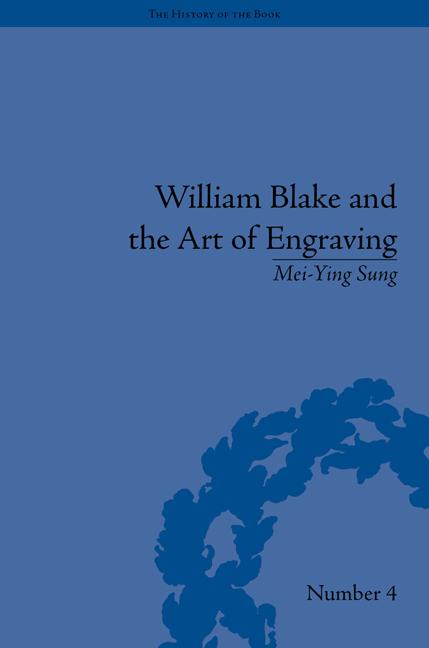Book contents
- Frontmatter
- CONTENTS
- Abbreviation
- List of Figures
- Acknowledgements
- Introduction
- 1 The History of the Theory of Conception and Execution
- 2 The Evidence of Copper Plates
- 3 Blake's Engraved Copper Plates
- 4 Copper Plate Makers in Blake's Time
- 5 Blake's Virgil Woodcuts and the Earliest Re-Engravers
- Conclusion
- Notes
- Works Cited
- Index
2 - The Evidence of Copper Plates
- Frontmatter
- CONTENTS
- Abbreviation
- List of Figures
- Acknowledgements
- Introduction
- 1 The History of the Theory of Conception and Execution
- 2 The Evidence of Copper Plates
- 3 Blake's Engraved Copper Plates
- 4 Copper Plate Makers in Blake's Time
- 5 Blake's Virgil Woodcuts and the Earliest Re-Engravers
- Conclusion
- Notes
- Works Cited
- Index
Summary
Before examining Blake's printing copper plates, this chapter discusses extant printing copper plates of the eighteenth and nineteenth centuries in major collections in the UK and USA. This sample comes from collections such as the British Museum Prints and Drawings, the Houghton Library at Harvard University, the Huntington Library in California, the Lewis Walpole Library of Yale University, the Victoria & Albert Museum in London, and the National Gallery of Art in Washington DC. The principal examination of these copper plates will focus on the marks of repoussage, a corrective technique practised by engravers directly onto the printing copper plates. The examination is persuasive, on the evidence of the sample of plates inspected, that Blake's contemporaries used repoussage far less than he did. In the light of the hard evidence of these copper plates made by Blake's contemporary engravers, we can start to rethink his position relative to them.
There are a number of extant printing copper plates dating from the eighteenth and nineteenth centuries or even earlier, which can be used to compare with Blake's surviving plates. Blake's use of copper plates was mainly for engraving but occasionally he used copper as a support for his paintings. There are six known and traceable surviving temperas on copper by Blake. These are Eve Tempted by the Serpent (1799–1800, V&A; Butlin 1981 cat. 379), The Judgment of Solomon (1799–1800, FMC; Butlin 1981 cat. 392), Nativity (1799–1800, Philadelphia Museum of Art; Butlin 1981 cat. 401), The Miracle of the Loaves and Fishes (c. 1800, ESSICK; Butlin 1981 cat. 416), Christ's Entry into Jerusalem (1800, Pollock House, Glasgow; Butlin 1981 cat. 422), and The Horse (c. 1805, Paul Mellon; Butlin 1981 cat. 366). It is likely that some of the twentytwo untraced biblical temperas were also on copper. It is tantalizing that some of these copper plates may still have engraving evident underneath the painted surface if Blake, according to his known habit with illuminated books, reused copper plates. However, this book will focus on the engraved or etched copper plates for printing used by Blake and his contemporaries.
- Type
- Chapter
- Information
- William Blake and the Art of Engraving , pp. 45 - 60Publisher: Pickering & ChattoFirst published in: 2014



